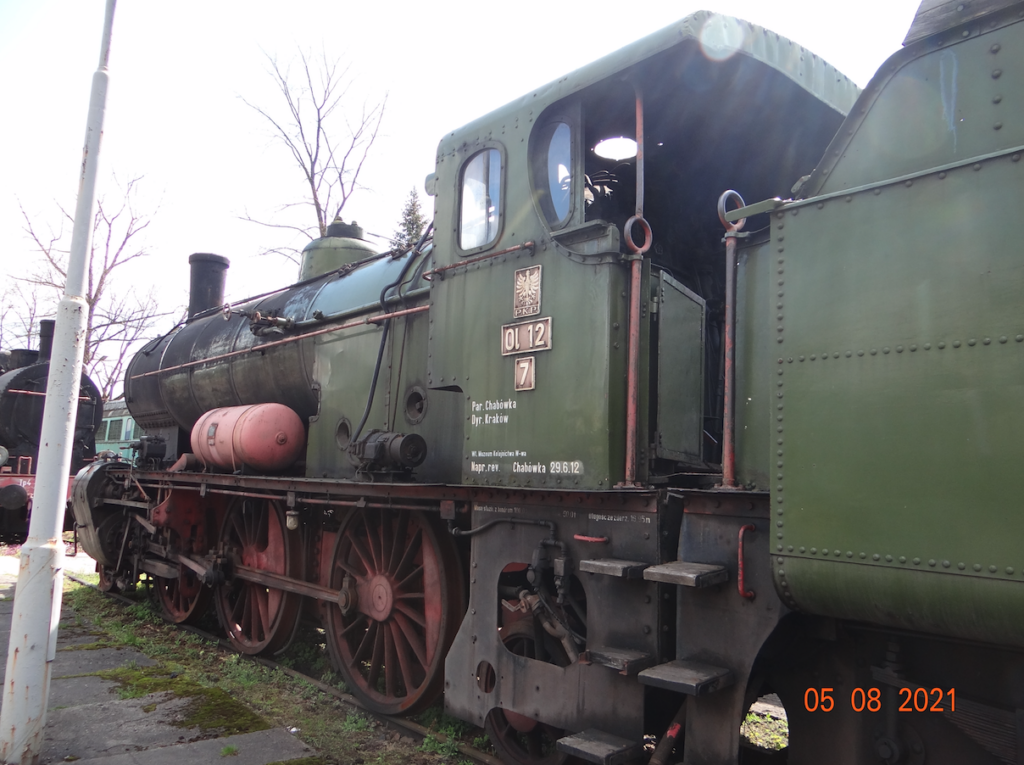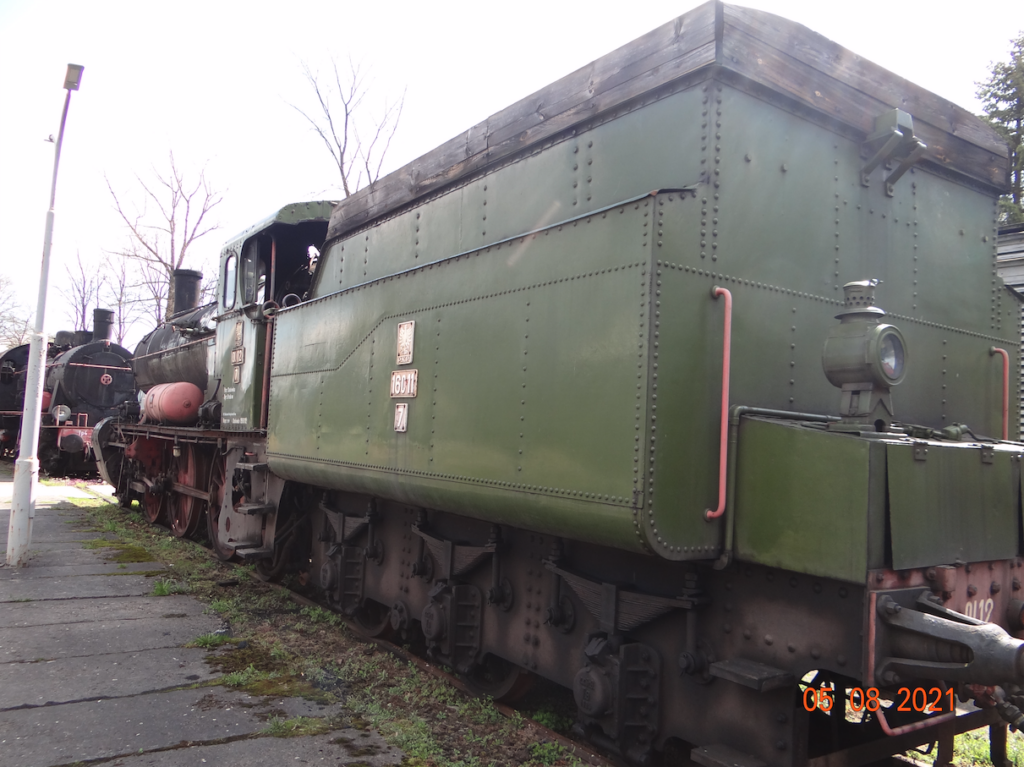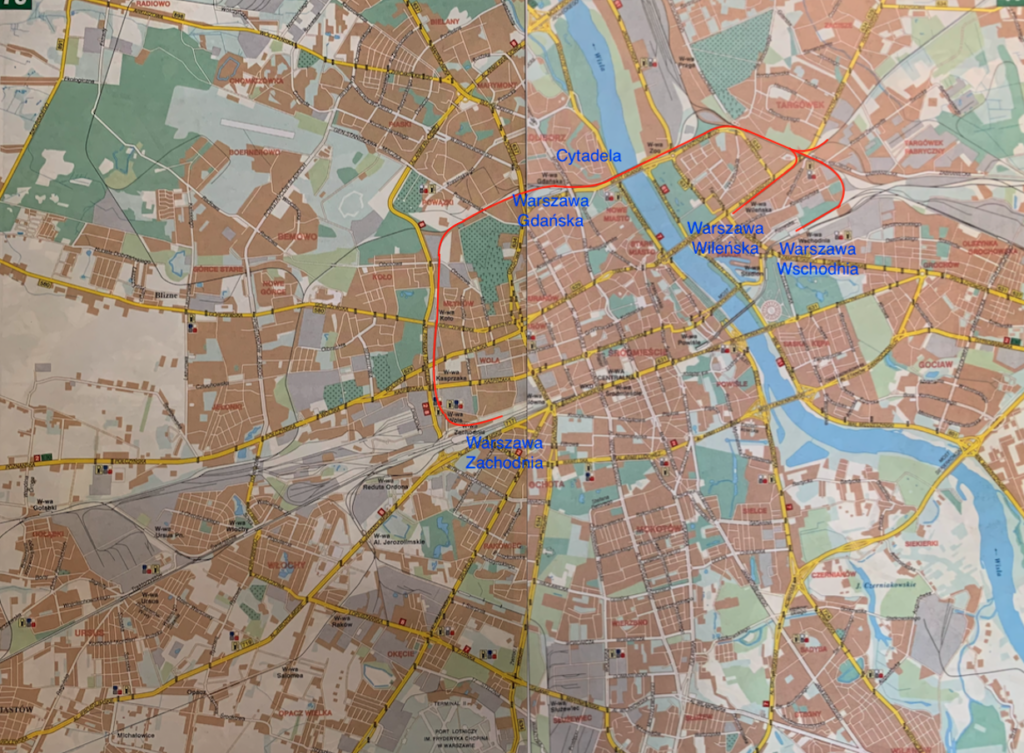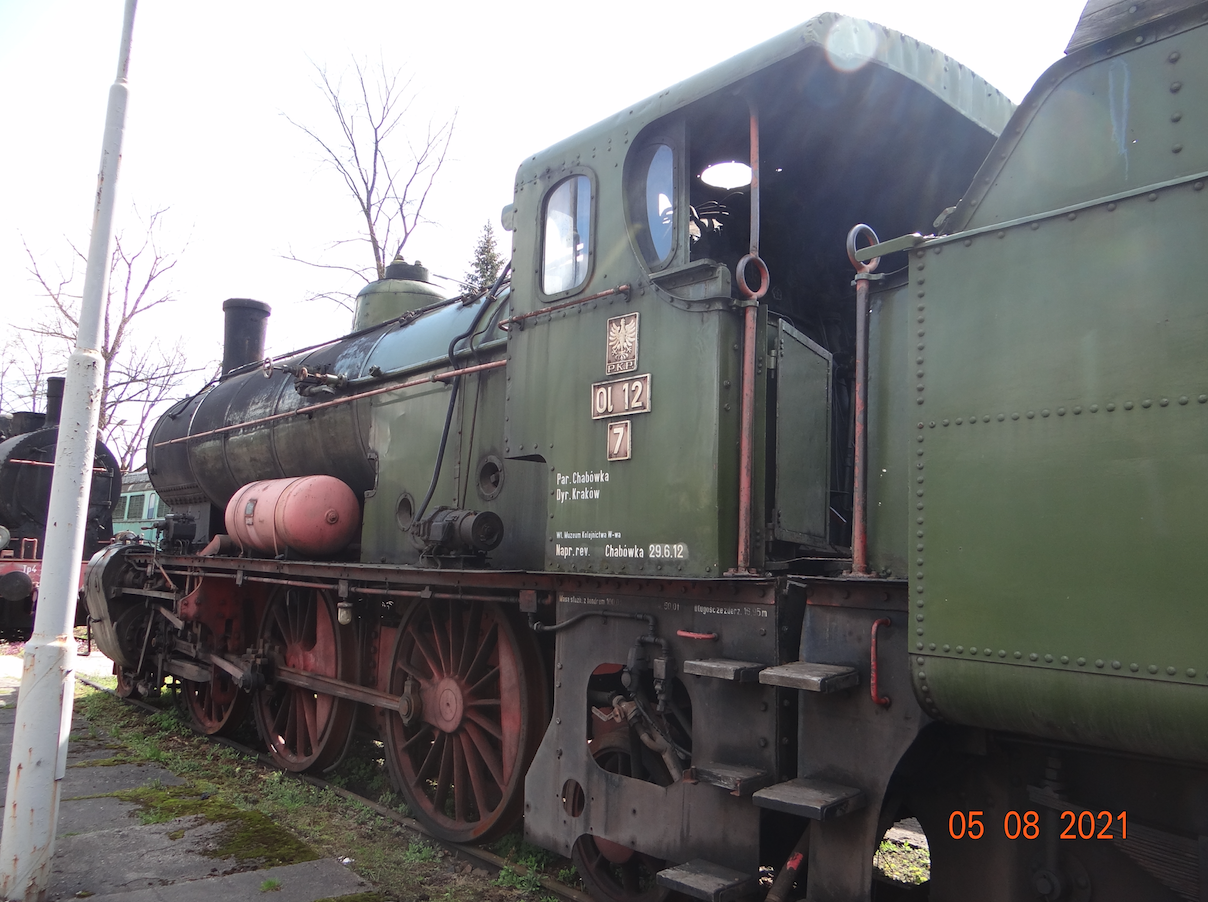Warszawa 2025-02-26
Warsaw Circular Railway.



In 1966, there were already three railway stations in Warsaw; Warsaw Wiedeńska (launched in 1845), Warsaw Petersburska (launched in 1862), Warsaw Terespolska (launched in 1866). All of these stations were head stations. Communication between the left and right bank of Warsaw and between these stations was provided by carriages and water crossings over the Vistula River. This was until the first permanent crossing over the Vistula, the Kierbedź Bridge, was built.
Kierbedź Bridge.
The Stanisław Kierbedź Bridge was built on the initiative of the Russian Railways Society. Officially, the bridge was named the Alexandrian Bridge, in honor of the Russian tsar. The common aversion of the Polish nation to the Muscovites resulted in the bridge being commonly called Kierbedź Bridge, explaining that he was its designer. According to the original concept, it was to be a railway bridge connecting the Petersburg Railway Station (now Warsaw Wileńska) with the Vienna Railway Station (now Warsaw West). However, the idea was unworkable, because one railway had a European gauge, and the other had a wide (Russian) gauge. In addition, running the railway through the middle of Śródmieście would have paralyzed the city. As a result, the bridge was built as a road bridge, on which horse tram tracks were later laid. Varsovians called these trams “toads”.
A railway bridge was built a few years later, north of Kierbedź Bridge, near the Warsaw Citadel, which was called Most przy Cytadeli (chief designer Tadeusz Chrzanowski). The French companies “Goüin et C-ie Batignolles” and “Schneider Creuzot” were involved in the construction of the bridge, represented by the French engineer Gottard and the Polish engineer Stanisław Janicki. Kierbedź Bridge was designed by engineer Stanisław Kierbedź. Close collaborators were Julian Majewski and Tadeusz Chrzanowski. Work began in the summer of 1859 and was completed in 1864. In order to start work on the new bridge, a temporary wooden bridge had to be built. The driving of pine piles into the riverbed began on July 31, 1859. The wooden bridge consisted of 12 spans, 39.5 m long. There were two abutments and 11 river supports that protected the water-holes. On the Old Town side, the span was raised higher, for larger ships to sail. After the steel structure was assembled, the wooden bridge was dismantled.
The cornerstone for the Kierbedzia Bridge was ceremonially laid in 1860. Caissons were placed in the river, in which the foundations for the bridge pillars were made. Four workers worked in each caisson, who changed every 6 hours. The bridge pillars were placed on the foundations. 5 bridge pillars were built. The bridge had six steel spans and a length of 474 m. The bridge was made as a tunnel truss. This was a popular method of bridge construction at that time. Inside the bridge, the food was made of cast iron gratings, but it was quickly replaced with wooden pavement. Over time, two tracks for a horse tram were installed there. Wooden sidewalks for pedestrians were placed on the external galleries, on both sides. On the bridge, in the summer, smoking cigarettes and pipes was prohibited, so as not to cause a fire in the wooden elements of the bridge. The cost of building the bridge was about 2.7 million rubles (such Russian currency). The opening of the crossing took place on November 22, 1864.
The Kierbedzia Bridge had a maximum width of 17.5 m. The total width of the bridge was 10.5 m. The width of the roadway was 3.20 m. There were two horse tram tracks on the bridge.
On August 5, 1915, the Kierbedzia Bridge was destroyed by the Muscovites during the Great World War. It was then rebuilt and destroyed by the Germans on September 13, 1944. The crossing was rebuilt in the period 1947-1949. In 1867, a gas line was suspended under the bridge, in 1882, telephone cables were laid, in 1894, two pipes were installed to supply water from the Filter Station, and in 1905, power lines were laid. In 1900, the first station of the Warszawa Most, the newly launched narrow-gauge Jabłonowska railway, was opened at Kierbedzia Bridge. In 1908, electric trams ran on the bridge for the first time.
In 1865, horse tram lines were laid between the Vienna Railway Station and the Petersburg Railway Station. A total of 6.2 km of tracks were laid, with a rail gauge of 1525 mm. The tram line began operating in December 1866. From the Petersburg Railway Station to the Vienna Railway Station, the route ran along the following streets: Wileńska, Targowa, Aleksandryjska, Kierbedzia Bridge (Aleksandryjski), Nowy Zjazd, Krakowskie Przedmieście, Królewska and Marszałkowska.
The bridge at the Citadel.
In 1866, the idea of building a railway bypass line was born, which would connect Warsaw’s railway stations. The main problem was the need to build a new railway bridge over the Vistula River. The first railway bridge in Warsaw was built next to the Warsaw Citadel, north of the Kierbedzia Bridge. Its designer was Tadeusz Chrzanowski, and the tender for its construction was won by the Warsaw company Lilpop, Rau and Loewenstein. Since the Moscow army had the main say in the discussion, it was ordered to build a bridge right next to the Citadel. The Russian artillery located there could protect the bridge from enemy attack.
The bridge at the Citadel was built from April 1873 to November 1875. The residents of Warsaw called it the second bridge. However, the bridge was not popular among the residents of Warsaw, because the crossing was located far from the center and it was necessary to make a detour. They continued to use water crossings or the Kierbedź Bridge.
The bridge was built based on American designs, i.e. as a two-level bridge and as a rail-road bridge. A railway track was built on top, and pedestrian and vehicle traffic on the bottom. Initially, the lower level was to be accessible only to the army, but over time civilian traffic was allowed there.
Two tracks were laid on the upper surface. One wide and one normal, but the tracks used three rails, because one of the rails was common to both tracks. It was not possible for two trains to move on the bridge at the same time. This was the bottleneck of the ring line.
The construction of the ring line, together with the bridge over the Vistula, was of great economic importance for Warsaw. It accelerated the construction of new factories, both in Praga Północ and Żoliborz. The direct connection with the Dąbrowa Basin guaranteed quick supplies of hard coal and other natural resources (iron ore, tin, lead).
Already in the period 1905-1908, a second railway bridge was built next to the Bridge near the Citadel. It was 32 m away from the old bridge. This bridge was designed by Nikolai Bielelubsky. The width of the surface allowed for the laying of two tracks, in both widths. The construction was carried out by the K. Rudzki i S-ka company. The steel trusses of the bridge were built by the Ostrowiecki Plants. All rail traffic was transferred to the new bridge, and the old bridge remained only a pedestrian and vehicle bridge.
Chronologically, the fourth bridge built in Warsaw, the Poniatowski Bridge, was called the third bridge by the Varsovians, because they treated the bridges near the Citadel as one bridge.
On August 5, 1915, all the bridges over the Vistula were blown up by the retreating Muscovites. Both bridges near the Citadel were rebuilt by the Germans, still during the Great World War.
The Circumferential Railway.
The Circumferential Railway was important for the development of the Moscow Empire. Warsaw became the Muscovites’ window to the world. After the construction of the Kierbedzia Bridge in the period 1859-1864, which was the first steel bridge over the Vistula, the Muscovites began to consider building another, this time a railway bridge over the Vistula. Initially, the Kierbedzia Bridge was to be a rail-road bridge, but it was completed as a road bridge with tram tracks.
Then two bridges were built at the Citadel, which mainly served rail traffic and allowed the creation of a railway circumferential line, which began operating in 1876.
The concession for the construction of the circumferential line and the construction of the Vistula Railway was issued on 22 February 1874, in the form of an act. The construction was commissioned to the Vistula Railway Joint-Stock Company. The direct execution of the project was entrusted to Leopold Kronenberg, who managed the company’s work. The project included the connection of the Vistula Railway Station with the peripheral line. On June 30, 1874, the Temporary Board for the Construction of the Peripheral Line in Warsaw was established. The chief designer, engineer Tadeusz Chrzanowski, was appointed to manage all technical matters. The purchase of land for construction was made in the period 1875-1876. The purchase of land was met with great resistance from the owners, because only 1/5 of the market value was paid for the land. The financial weakness of the Muscovites is visible to this day. A poor and stupid nation that still thinks it is an empire. The lands near the Citadel and Powązki were the property of the army, so they did not have to be bought. At the time of the opening of the line, there were stations and stops: Warszawa Obwodowa, which was on the northern side of the freight station on the Warsaw-Vienna line. Freight station of the Petersburg Railway Station. Freight station of the Terespolski Railway Station.
In the period 1877-1878, passenger stations were built on the line. A station was built at Franciszkańska Street (currently Warszawa Gdańska station). The station was then named Warszawa Nadwiślańska and was also a freight station. The railway facilities were made only of wood. This station was launched in February 1878. A passenger stop was also built on the other side of the Vistula; Praga Nadwiślańska.
The ring line was built as a double track; with a European track and a Tsarist track. Over time, the broad gauge from the Warszawa Obwodowa station was extended to the goods station; Warszawa Towarowa (currently Warszawa Główna).
At the Warszawa Obwodowa station, 4,400 m of broad gauge tracks and 4,400 m of standard gauge tracks were laid. 15 switches were installed. From the Warszawa Obwodowa station, the line curved to the right towards the north. It crossed the villages of Czyste, Wielka Wola, Wola and after turning towards the east, bypassed the Powązki cemetery from the north. The line entered military areas, next to barracks and military warehouses and bypassed the Citadel from the south. The line crossed the bridge at the Citadel on the Vistula and entered the area of Nowa Praga behind the Śliwicki Fort. Further on, the line crossed Praga Północ and Brudno, turning towards the south-east. The line reached the Warsaw – St. Petersburg route. In the area of the Radzymin route, the broad gauge split towards the Petersburski Railway Station (to the west), and also towards St. Petersburg (Targowek freight station) and together with the normal gauge further to the Terespolski Railway Station (currently Warszawa Zachodnia). Additionally, a broad gauge was built between the Terespolski Railway Station and the Petersburski Railway Station (currently Warszawa Wileńska).
The total length of the peripheral line was 12 km, and the additional connecting lines 6.5 km. Most of the lines were placed on an embankment, which is two tracks wide. The embankment is an element of the fortification rampart of Warsaw. The embankment crossed several streets, with varying urban traffic intensity. There were 18 railway-road intersections, at which guardhouses for crossing guards were built. There were no barriers, but light and sound devices were installed to warn of approaching trains. Viaducts were built only in 3 cases. Over time, as traffic increased, barriers were installed. Rail-road crossings were replaced with viaducts much more slowly. It was not until 1921 that tracks were laid on an embankment in Wola, at the same time eliminating wide-gauge tracks. Viaducts were built then along the streets of Wolska, Górczewska, Opawska and Obozowa. The works were completed and traffic opened in 1924. In 1929, a viaduct over the line along Powązkowska Street was put into use. In 1937, a road viaduct was built over the line near the Gdański Railway Station, along Adama Mickiewicza Street. The rolling stock of the peripheral line included an armoured train.
Due to the parameters of the line adopted by the occupier, it was of average efficiency. The Muscovites mainly transhipped goods at the Warszawa Nadwiślańska station, instead of the Warszawa Obwodowa station. The Warszawa Nadwiślańska station had a similarly limited station. However, the presence of the Citadel, and even Fort Traugutta and Fort Legionów, gave the Muscovites full control over the flow of goods and people. Another bottleneck was the railway bridge over the Vistula, where trains ran alternately. Often, trains crossed the Vistula empty, without goods. There was also a problem with the wide tracks, which ended at the Warszawa Towarowa station and did not reach the Wiedeński station. This made it difficult for passengers to change trains. On the other hand, in the other direction, the normal-gauge tracks did not reach the Petersburg Railway Station. As a result, passengers had to change trains several times.
The increase in freight and passenger traffic on all railway lines forced several additional new investments and modernizations. In the period 1875–1880, the Warsaw section of the Warsaw–Vienna Railway was modernized. 30 km of new tracks and about 100 new switches were laid. New sidings were built from each line to developing factories. In Warsaw, the longest sidings were built to the municipal gasworks in Czyste, to the military warehouses in Stawki and, in 1903, to the Warsaw Power Plant. In 1885, at the initiative of manufacturers, a new goods station was built as a transshipment point at Górczewska Street, which was called Platforma Górczewska. However, as a result of the occupier’s actions, the station was closed after a dozen or so months. Despite this, Wola developed industrially. Many manufacturers moved their factories here and funded new ones. It is estimated that the freight traffic in Wola included 98,000–100,000 kg of goods per year.
Until 1933, the ring line was the only railway route that connected Warsaw with Prague, and above all, it connected all three Warsaw stations. In addition, Praga had more free land for investment and it was cheaper land than land in Wola. This attracted more investors. It is estimated that 40% of all goods that reached Warsaw were transported via the Bridge at the Citadel. The ring line also enabled the creation of large-scale goods exchange between industrial areas located on the left side of the Vistula, all the way to the Dąbrowa Basin, and the eastern territories of the Kingdom of Poland. The main commodity was hard coal, which accounted for 70% of the raw materials.
Currently, the ring railway lines are LK No. 20 and No. 509. The line starts at the Warszawa Zachodnia station on Platform 9 (until December 19, 2021, Platform 8). Until 2012, it was a separate stop Warszawa Wola (previously Warszawa Kasprzaka). The line runs through stations and stops; Warszawa Wola, Warszawa Młynów, Warszawa Koło (launched in 2017), Warszawa Powązki (launched in 2019), Warszawa Gdańska, Warszawa Zoo, Warszawa Targówek and Warszawa Wschodnia. The line is electrified with 3 kV DC current, along its entire length. Currently, there is no direct connection of the ring line with Warszawa Wileńska station (previously Dworzec Petersburski). But there is a connection through Warszawa Wschodnia Towarowa stations.
Written by Karol Placha Hetman
